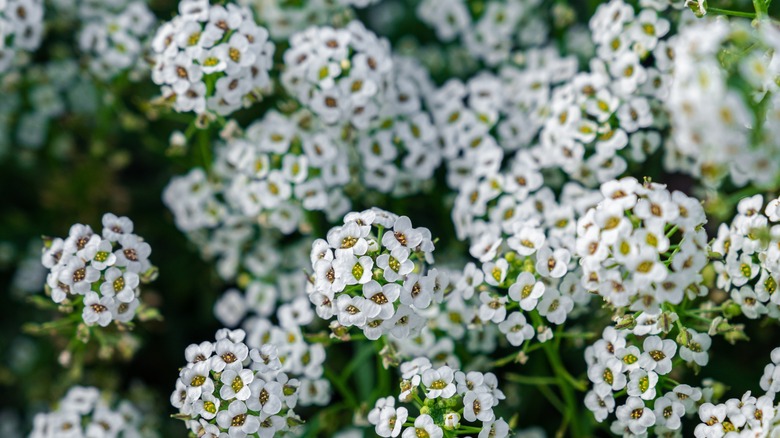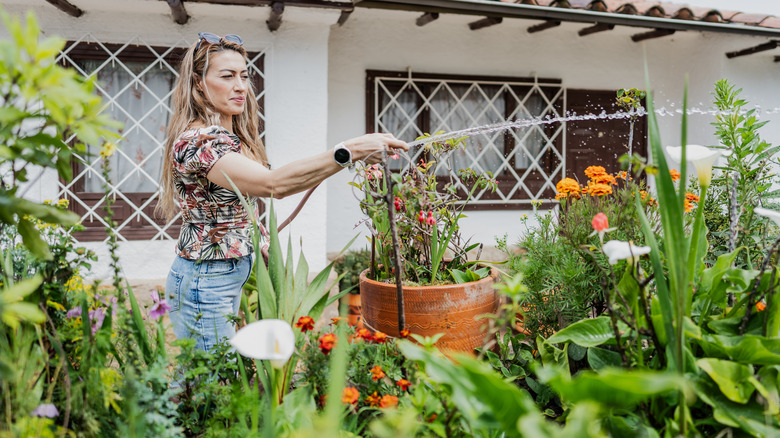Companion planting is a simple, easy way to maximize the amount of space and type of soil conditions your property has on hand to create an efficient, productive garden. Placing plants with similar needs and complementary traits together can help to reduce pests and weed growth, attract more pollinators, and simply beautify your space. One particularly gorgeous example of companion planting is the pairing together of perennial hibiscus and sweet alyssum.
Both sweet alyssum and hibiscus are available in large-scale varieties that are known to spread up to four feet. While hibiscus offer a larger (dinner plate sized, in fact), showier flower, the impressive blooms give off little if any fragrance. Sweet alyssum, on the other hand, produce a simple flower that packs a super sweet, fragrant punch. Together, hibiscus can provide the visual interest sweet alyssum is short on and sweet alyssum can make up for the pleasant scent hibiscus lacks. Consider this your guide to growing these two flowers together to maximize the strengths of each.
How to plant hibiscus and sweet alyssum together

When it comes to growing conditions, hibiscus and sweet alyssum agree on most aspects. Both plants prefer moist soil with good drainage. Both flowers can survive in partial shade but prefer full sunlight. Once you’ve located a sunny area to plant your hibiscus and alyssum seedlings in, be prepared to wait. While both plants should be planted well before the heat of summer sets in, both will take their time to bloom (especially hibiscus).
Once your hibiscus and sweet alyssum flowers do emerge, they will last until late into the season when fall frost becomes a guarantee. Sweet alyssum’s low profile and tendency to spread makes it a wonderful groundcover for hibiscus, basically serving as a fragrant, attractive mulch that will help retain heat and moisture while suppressing the growth of weeds. Consider planting a variety of white and cream hibiscus and sweet alyssum flowers to complement each other in a clean, bright, and sophisticated arrangement.
How to care for hibiscus and sweet alyssum together

Since hibiscus and sweet alyssum prefer very similar growing conditions, caring for the two of them together is rather simple. Once they have been planted in an ideal area, it all comes down to watering, feeding, and pruning. Hibiscus does enjoy receiving a bit more water than drought-resistant plants like sweet alyssum, so you may need to remind yourself to only meet its minimum water needs to prevent overwatering your sweet alyssum. This will likely mean watering just once each week when the plants are fully established.
Both hibiscus and sweet alyssum will need to be fed an extended-release fertilizer each spring. Each plant will also benefit from semi-aggressive pruning. For hibiscus, this means removing the tips of each branch to encourage fuller growth. For sweet alyssum, pruning comes in the form of deadheading consistently to make way for more flowers. All in all, these two make nearly perfect companion plants that will have your garden the talk of the town in no time.



